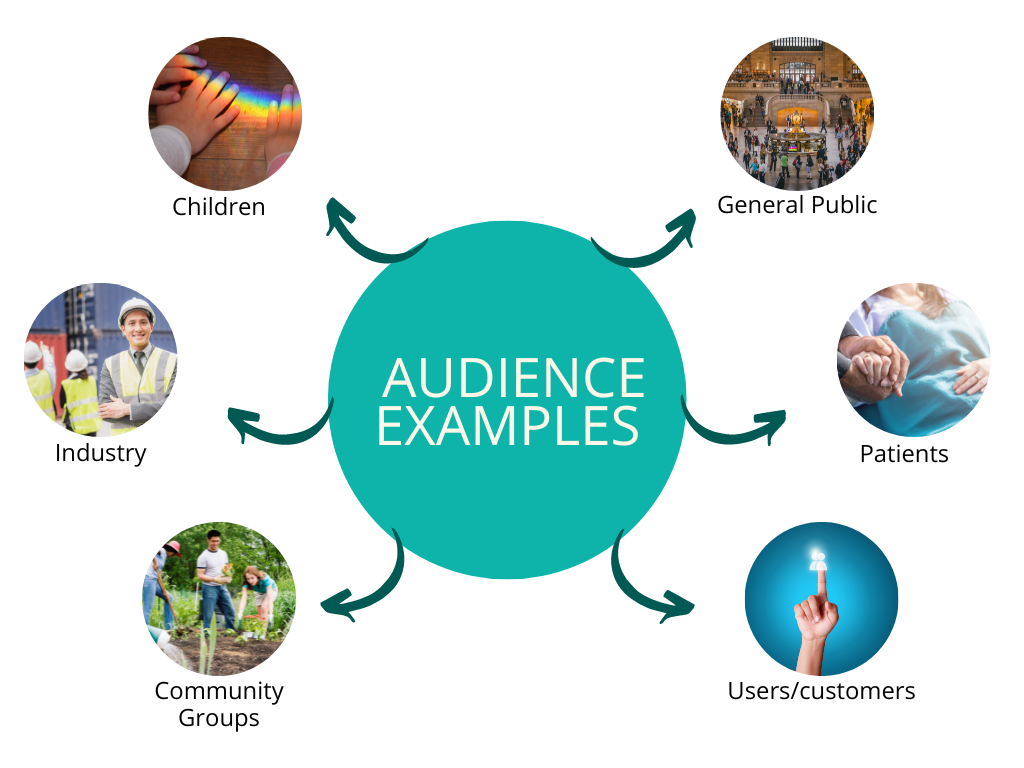To engage others in your research, create new partnerships or maximise impact, you must be able to communicate with your target audience. Optimising this requires tailored language and awareness of the needs of your target audience. When realising impact potential, your audience will extend outside of academia. Below are examples of potential audiences:
Levels of topic knowledge
Depending on your intended audience, there can be varying degrees of knowledge of your field/ topic. It is important to be aware of how much prior knowledge you are assuming your audience has. For impact projects, it is recommended that you have ways of communicating your work to anyone.
As part of communicating effectively with external audience you should be able to translate your research into lay language. This means delivering the core information of your research with the technical/ specialist terms removed or explained.
Tailoring the tone and delivery method will also be influenced by the audience you are communicating with. Ask yourself:
- Does this audience understand the basics of my research topic and why it is important?
- Which details are important to explain/unpack for the audience to understand the key points?
- How can the information be delivered to maximise engagement and understanding?
- Is there a way to encourage interaction/engagement with the research being presented?
Top Tips
There are a series of ways in which you can optimise your communication startegy with external audiences. Many of these require some thought to how your research may be recieved by others. Here are some ideas on how to prepare and plan for communicating with external audiences:
If you have any queries on how to best communicate with your intended audience, contact [email protected] or [email protected].


